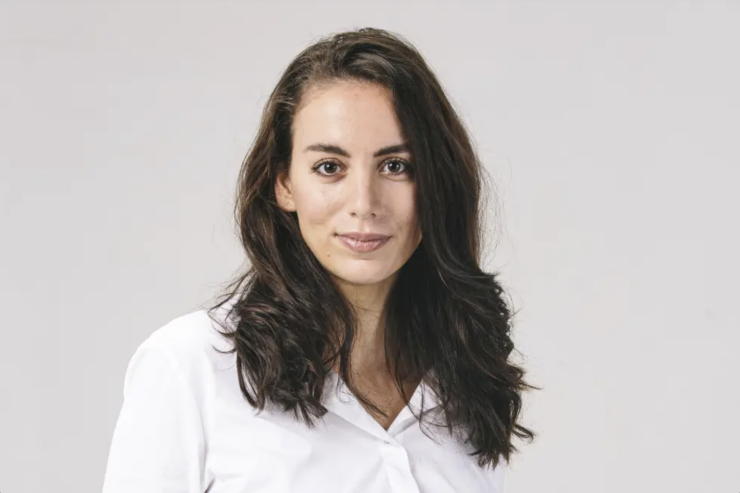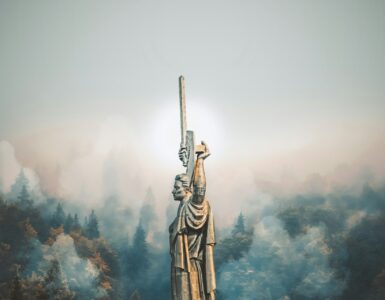Before this week, most people still hadn’t heard of Mira Murati. But overnight, she’s been at the center of the leadership crisis at OpenAI, arguably the most important startup in the fast-evolving AI landscape.
In one of the most surprising moves in the history of Silicon Valley, the non-profit board of the for-profit OpenAI startup, widely perceived as the pioneer and frontrunner in the AI race, has fired its popular CEO Sam Altman and replaced him with their 37-year-old CTO Mira Murati as an interim chief executive.
“As the leader of the company’s research, product, and safety functions, Mira is exceptionally qualified to step into the role of interim CEO,” OpenAI’s board said in a blog post on Friday. “We have the utmost confidence in her ability to lead OpenAI during this transition period.”
While Microsoft expressed confidence in her on Friday immediately following the surprise announcement, things developed quickly over the weekend. It’s clear that the 49% shareholder in OpenAI was taken aback by the decision, with Microsoft CEO Satya Nadella taking a prominent role negotiating with the board to reinstate Sam Altman, according to Bloomberg’s’ reporting.
Despite these talks, Murati apparently sided with Altman and was planning to bring him back, Bloomberg reported on Sunday. At the same time, OpenAI co-founder and board director Ilya Sutskever told The Information that Altman isn’t coming back and that the board appointed a new Interim CEO: Emmett Shear, co-founder of video streaming site Twitch.
Regardless of Murati’s eventual role at OpenAI or elsewhere, she played a central role in this latest tumultuous chapter and is likely to be a part of the future of AI development for years to come.
So, who is she?
Luckily for us, Murati and Altman have been on a media tour in the last few months, speaking to virtually all the major publications and podcasts about their vision and plans for OpenAI.
Prior to her promotion, WIRED described her role at OpenAI as the “Minister of Truth,” while Fast Company called her “the real star of OpenAI” and the “person shaping ChatGPT, Dall-E, and the future of AI.”
We’ve read, watched and listened to hours of her interviews to bring you some of the most insightful comments, where she shares details about her upbringing in Eastern Europe, education, experience at Tesla and her stratospheric rise to the top role of the fastest-growing service ever and the pioneer of the AI revolution that’s captured the imagination of millions around the world.

Albanian Roots
Murati grew up in Eastern Europe and speaks several European languages.
She’s is originally from Albania, born in 1988 in the southwestern city of Vlore on the coast of Albanian Adriatic and Ionian Sea Coasts.
She described it as a “very isolated country” on a podcast hosted by Andreessen Horowitz venture capital firm in September.
“It was very central to my education and focus in math and sciences because there was a lot of focus on math and physics in post-Communist Albania,” said Murati, whose parents taught literature. “The humanities, like history and sociology, were a bit questionable.”
“What people misunderstand about Communist regimes, when everything is equal, there is a fierce competition for knowledge, that’s kind of the setting I grew up in,” she shared with Microsoft’s CTO Kevin Scot on his podcast Behind the Tech. “I was always very hungry for knowledge and the pursuit of knowledge.”
“I was always interested in how the brain works and intelligence, more at abstract levels,” she recalled.
She then studied computer science at the University of Tirana, graduating with honors. In college her senior project was building a hybrid car, as she began applying her technical skills to solving real-world problems.
As a result of her Eastern European upbringing, she speaks Albanian, English and Italian, according to her interview with WIRED magazine earlier this year.
Interest in Artificial Intelligence
After her education in mechanical engineering, she joined Tesla in 2013. She spent 3 years at Tesla, where her interest in Artificial Intelligence developed.
“At the time, the company was releasing early versions of Autopilot, its AI-enabled driver-assistance software, and working on AI-enabled robots for its factories,” according to a profile of her in Fast Company. “That led Murati to consider other real-world applications.”
This experience wasn’t without its share of controversy, as the Autopilot feature received its share of criticism, and the company also had issues with factory automation.
Murati also reflected on the culture at Tesla and how it compares to OpenAI.
“Tesla was an incredible place and in some ways I find it quite similar to OpenAI. Obviously it was much bigger and working on something very different, but there was this density of talented, smart people that are so passionate about what they are doing,” she recalled. “It’s almost like a spiritual pursuit, everyone believes so hard in what they were doing and it being the most important thing–that is just so powerful when you’re working on really hard problems.”
Augmented Reality Detour
Not all her projects were winners: She joined an augmented reality startup then known as Leap Motion.
After she joined the company in 2016, Murati ran into challenges.
“As VP of product and engineering, she hoped to make interacting with a computer ‘as intuitive as playing with a ball,’ she told Fast Company. But then Murati realized that this VR-based technology “wasn’t close to being ready for a mass audience,” according to Fast Company.
Leap Motion was acquired by British company Ultrahaptics
AGI as the Holy Grail
Murati is not just a believer in Artificial General Intelligence (AGI), but actively dedicated her career to making it a reality. AGI is basically AI with more human characteristics and intelligence or, to use Sam Altman’s definition, the “thing we don’t quite have yet.”
“I very quickly believed that AGI would be the last and most important major technology that we built, and I wanted to be at the heart of it,” she told WIRED in an interview. “OpenAI was the only organization at the time that was incentivized to work on the capabilities of AI technology and also make sure that it goes well.”
She joined the organization in 2018, where she began working on its supercomputing strategy and managing research teams. While at OpenAI, she also oversaw rollouts of Dall-E, AI code generator Codex and ChatGPT.
Still, Murati wants the public involved in making AGI a reality. Or, at the very least, she wants public feedback and participation in testing.
“You could make technological progress in a vacuum without real-world contacts,” she told Fast Company. “But then the question is, are you actually moving in the right direction?”
This approach sets her apart from tech leaders at Google and other companies that prefer to limit their research to a closed group.
She told Fortune that building AGI in a lab can make the societal shock more disturbing when it does come out.
A Fan of AI Regulation
While most of OpenAI’s leadership team can be described as dreamers and idealists to an extent, Murati doesn’t think they should be the only ones in charge of the future of AI.
“We have philosophers and ethicists at OpenAI, but I really think there are big societal questions that shouldn’t be in the hands of technologists alone,” she said on The Daily Show last year. “I think it’s important to bring these technologies into the public consciousness in a way that is responsible and safe.”





Add comment